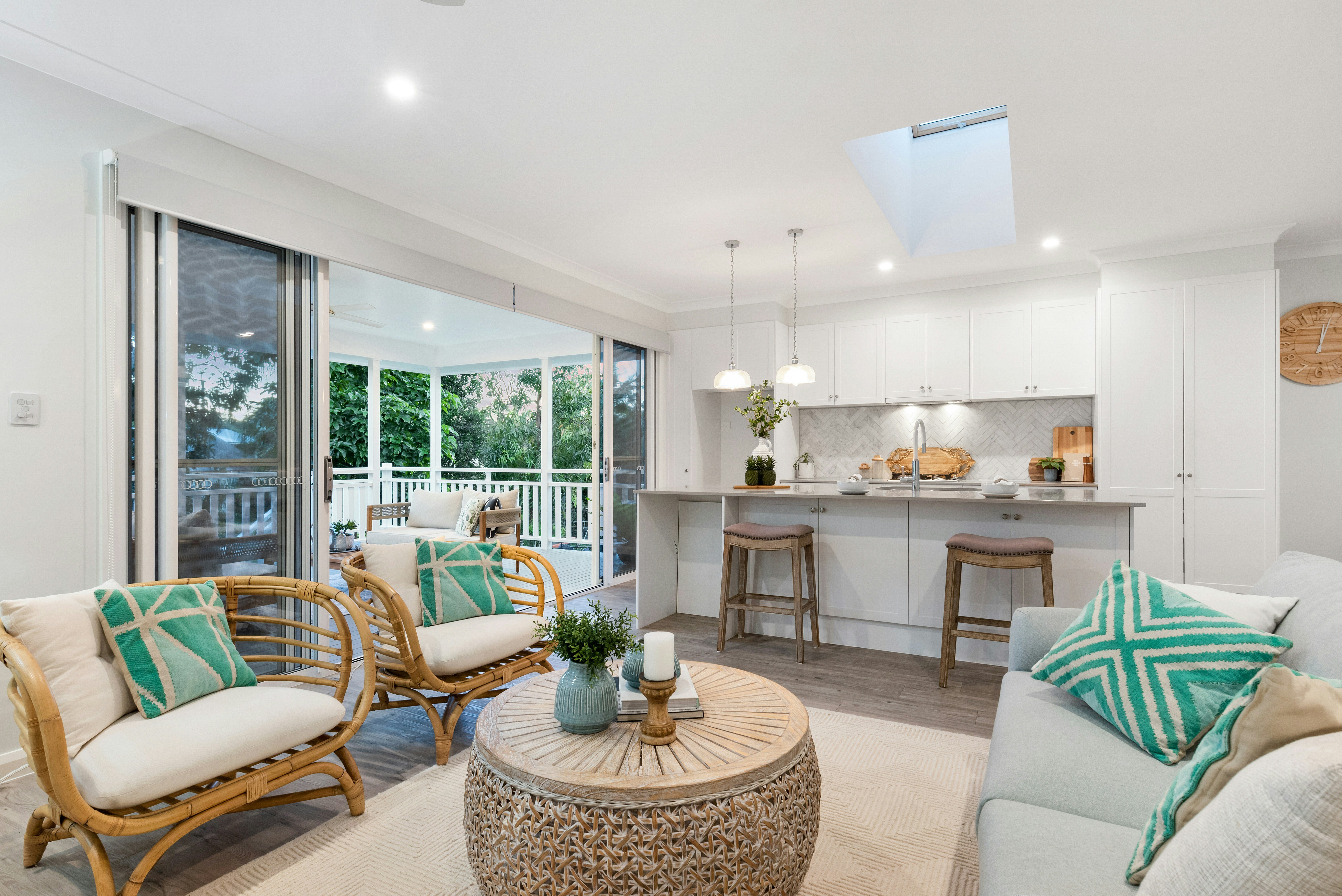Is an Open-Plan Living Space Right for Your Home?
Thinking of an open-plan living space? This guide explores the pros, cons, and considerations. Discover if it's the right choice for your home and lifestyle.

Open-plan living spaces have become a popular design choice, offering a modern, airy feel that encourages connection. However, they’re not for everyone. Before committing to a renovation, it’s essential to weigh up the benefits and drawbacks to see if an open-plan living space suits your home and lifestyle.
What Is an Open-Plan Living Space?
An open-plan living space removes walls between key areas such as the kitchen, dining, and living rooms, creating one large multifunctional area. This design is favoured for its spaciousness and ability to enhance social interaction.
The Benefits of Open-Plan Living
1. Better Social Interaction
Open layouts allow you to cook, entertain, and interact with family or guests all in one space. This is particularly beneficial for families with young children, as it enables parents to keep an eye on them while preparing meals.
2. More Natural Light
With fewer walls, natural light can flow freely, making your home feel brighter and more inviting. This can reduce the need for artificial lighting during the day, potentially lowering energy bills.
3. Enhanced Flexibility
An open-plan space can be easily adapted to suit different needs. Whether it’s hosting a gathering, creating a play area for kids, or setting up a home office, the layout remains versatile.
4. Improved Ventilation
With open spaces, air circulates more efficiently, helping to keep the home fresh and reducing the likelihood of stale, trapped air.
 (Image source: Pexels)
(Image source: Pexels)
The Downsides of Open-Plan Living
1. Lack of Privacy
With fewer walls, it can be difficult to find a quiet space to focus or unwind. Noise travels easily, making it challenging for multiple people to engage in different activities at once.
2. Harder to Control Clutter
In an open-plan space, everything is on display. If the kitchen is messy, it impacts the entire area. This can create a pressure to keep everything tidy at all times.
3. Heating and Cooling Challenges
Larger open areas require more energy to heat and cool efficiently. Unlike smaller, enclosed rooms, it’s harder to regulate temperature in an open-plan space.
4. Cooking Smells Travel
Without walls to contain them, food smells from the kitchen can spread throughout the home. While this isn’t a deal-breaker for everyone, it’s something to consider if you prefer to keep strong cooking aromas confined.
Who Might Prefer a Traditional Layout?
If you value privacy, need quiet spaces for work or study, or prefer distinct areas for different activities, a more segmented layout might be a better fit. Additionally, larger homes may not need an open-plan design to feel spacious and inviting.
 (Image source: Unsplash)
(Image source: Unsplash)
Who Benefits Most from Open-Plan Living?
Open-plan living works well for:
- Families who enjoy spending time together and need visibility across shared spaces.
- People who entertain frequently and want a seamless flow between kitchen, dining, and lounge areas.
- Homes with limited square footage, as removing walls can make a small space feel much larger.
If you’re thinking about knocking down walls to create an open-plan living space, it’s important to get expert advice. A professional home renovator can assess your space, help with structural considerations, and ensure the final design suits your needs.
Find experienced home renovators on ServiceSeeking.com.au to bring your vision to life with expert craftsmanship.
